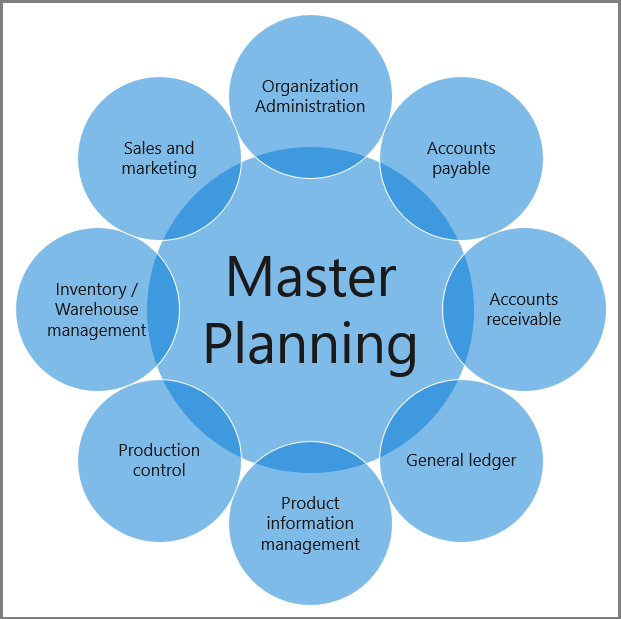Master planning
Master planning assesses the following:
- Raw materials and capacities that are currently available.
- Raw materials and capacities that are required to complete production. For example, determining what must be manufactured, purchased, transferred, or set aside as safety stock before you can complete production.
Master planning uses the above information to calculate the requirements and generate planned orders such as purchase, transfer, and production orders.
The following image illustrates the integration of the Master planning module in Supply Chain Management with other modules in Finance.

The three main planning processes are:
- Master planning - The Master plan calculates net requirements. It is based on actual current orders and enables companies to control inventory replenishment on a short-term, day-to-day basis. Another term to describe it is the Net requirements plan.
- Forecast planning - The Forecast schedule calculates gross requirements. It is based on future projections (or forecasts), and enables companies to conduct long-term planning of materials and capacity.
- Intercompany master planning - The Intercompany master plan calculates net requirements across legal entities. It connects demand and supply between companies not only for short term, firm demand, and supply, but also for long-term, planned (that is not yet firmed) demand and supply.
The above content is taken from : https://docs.microsoft.com/


No comments:
Post a Comment